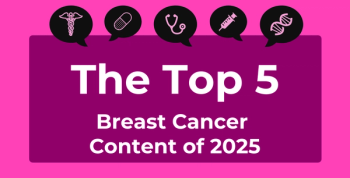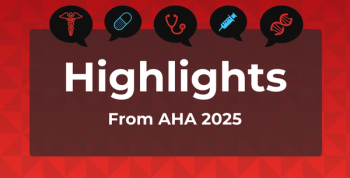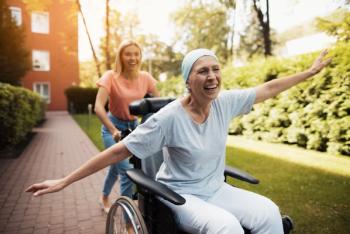
How Have Colleges, Universities Addressed the COVID-19 Pandemic?
There were a myriad of factors considered when deciding how to reopen higher education institutions amid the COVID-19 pandemic, particularly in prioritizing the safety of students, faculty, and community members, as well as the quality of education delivered.
There were a myriad of factors considered when deciding how to reopen higher education institutions amid the coronavirus disease 2019 (COVID-19) pandemic, particularly in prioritizing the safety of students, faculty, and community members, as well as the quality of education delivered, said Dennis Scanlon, PhD, Distinguished Professor of Health Policy and Administration at Penn State University.
Transcript
AJMC®: Hello, I'm Matthew Gavidia. Today on the MJH Life Sciences’ Medical World News, The American Journal of Managed Care® is pleased to welcome Dennis Scanlon, distinguished professor of Health Policy and Administration at Penn State University. Can you just introduce yourself and tell us a little bit about your work?
Dr Scanlon: Sure, Matthew, happy to. So, I'm Dennis Scanlon—I'm a faculty member at Penn State University. My background in training is in public health and economics. I've been at Penn State for 24 years, I teach in areas of health economics and health policy research design.
I direct a research center engaged in a variety of different topics related to health services research and health policy, working in interdisciplinary areas and I also have some administrative responsibilities.
As it pertains to today's topic, I was asked to be one of several individuals at the institution, given my background to help advise on what we should do at Penn State given the COVID-19 pandemic, in terms of thinking about returning to residential instruction and education for the fall of 2020.
AJMC®: As schools nationwide decide whether to implement virtual, in-person, or hybrid class strategies amid the COVID-19 pandemic, can you speak on public health concerns voiced either by students or faculty in upper level academics?
Scanlon: So, it's been an interesting evolution, I think, as everybody knows in terms of in this country when we first became significantly aware of the pandemic to the point where it started to change our behaviors and our organizational or individual behaviors throughout the summer and leading up to the fall.
I guess what I would say is higher ed institutions, colleges and universities, responded very quickly in late February, beginning of March. In many respects, the timing of that response was very much conducive with a normal academic schedule of having a spring break. So, in fact, at Penn State University, for example, we had a fairly well timed, in the beginning of March, weeklong—ends up if you count both weekends being almost 10 days—break. And what that allowed us to do as an institution leading up to that was sort of understand the issue, try to learn more about the issue, and decide what our response should be.
When we opted not to bring students back to residential instruction, but to pivot very quickly and operate remotely, just about every institution across the country did something similar. I would say it was fortunate to have that timing. As we kind of evolved through the next several months, we're in late spring thinking about the summer and the fall, institutions were faced with the decision of what to do.
I guess I would say that the concerns faculty and students had, and I would also put community stakeholders, individuals in the communities where our institutions are located, were all the sort of the typical ones that people have. Health and safety of populations, specifically concerns about mortality, the worst possible outcome, and concerns about those who become severely sick, exhausting inpatient health care resources in particular; but beyond that, concerns about morbidity, just general sickness in the population, and what that sickness might do, as well as the infectiousness of the sickness and the ability to transmit and spread this to others.
So, really, I think the significant concern was just health and well being in transmission on something that was hard to understand what the variation would be or the probabilities for significant or severe outcomes would be for those getting sick and how that might vary across types of individuals. Then, also, really decisions around whether to take a more or less conservative approach.
At the backdrop were concerns about if we modify kind of business as usual, so to speak, what are the implications of that. So, for communities with colleges and universities, there are economic implications—restaurants, hotels, other businesses that rely on the commerce created by those students, faculty, staff, and others at those institutions. Certainly, there were concerns about how we would modify educational delivery to be done in a meaningful way, in a way that was acceptable, and would achieve kind of the similar types of outcomes that in institutions of higher ed we try to achieve.
Then, also, sort of the general preferences oftentimes at the undergraduate level. Certainly, 18 to 20 year olds there's a very social component of college life, there's participation in extracurricular activities—anything from varsity sports to theater to music, to other cultural or group events.
So, really a feeling of loss or disappointment if we had to kind of give that up, especially after a period of time, an extended period of time where people were locked down essentially in place. So, lots of concerns and lots of things to balance as these institutions of higher education had to decide how to go forward.
AJMC®: You kind of addressed this, but in assessing aspects of reopening plans, what factors warrant consideration? And which do you think are still unmet?
Scanlon: So, I know in some of the work that I've done, we tried to sort of advise along the lines of thinking about, again, mortality, morbidity, disruption to operations, and then reputational impact—we started to think about, as one thinks about sort of reopening, you can get into a myriad of specific issues, but how would they affect those.
So, again, mortality being the worst possible outcome–not wanting to certainly contribute to death, if at all possible to control. So, thinking about, what do we know about the underlying epidemiology of the disease? What do we know about risk factors? And what is the likelihood? What do we know about treatment, which has continued to emerge in terms of pharmaceutical therapy or non-pharmaceutical intervention.
So, thinking about that, the more likely scenario, of course, is morbidity, and really trying to get a handle on what does morbidity look like. How severe and serious is it? What are the treatment needs? So, making sure that if you're going to potentially increase the risk in a population of disease spread, which certainly would happen from going from everybody staying kind of sheltered in place to opening up to some degree.
As you increase that risk, you certainly have to have adequate resources available, both resources available to hopefully prevent—that's PPE [personal protective equipment], that's sanitation supplies, face masks, and things of that nature; but then also, student health services on campuses—do they have the capacity or what is their capacity to see patients that present with symptoms that might be COVID-like to treat? Are they up to speed in kind of the latest in terms of the ability to diagnose and make treatment decisions? And that gets into the whole discussion of testing.
What resources does one need for testing? I think a lot of institutions thought about this as a testing for symptomatic patients—patients presenting, students presenting, others presenting with symptoms or a belief that they may have been exposed; but then also other kinds of testing, which we might call population surveillance testing, which is trying to identify asymptomatic individuals, because we know, specific to COVID-19, that there is asymptomatic presentation, and because of that asymptomatic presentation, individuals can sort of transmit this without ever knowing that they even had it, and that's the really difficult part. Difficult when one compares COVID-19 to other infectious diseases that we've seen on our college campuses in the past.
So, beyond that, I think there, clearly, I think, across institutions, has to be a weighing of both sides of this. No matter how you slice it, there's uncertainty, and there are costs and benefit tradeoffs. That sounds perhaps to some a little bit crass, but really trying to weigh the risk, what level of risk may be worth taking, and what are the costs to mitigate that risk. Again, putting all the various things in place, and weighing that against as we've talked about earlier, some of the concerns of others around job loss or economic impact to the community, tax revenue to the community, things of that nature.
So, as you get into it, then just lots of very specific logistics decisions unique to higher education such as, how do we modify class schedules? How do we deal with social distancing in a classroom? So, we're going to have in-person classes, but now the class capacity in a physical space has been cut from 50 seats to 20 seats or something like that.
So, a lot of logistics that I think are very unique to higher education and given the mobility of students and class offerings. Really when one looks at the period of time, I mean, it was no more than about probably 4 months to put these plans in place for those who ultimately decided.
AJMC®: How have colleges and universities sought to prioritize safety while also optimizing education as well?
Scanlon: I think you could answer that in a couple different levels, and one of the things I've done from day 1 is really try to sort of understand how others were approaching this. It was very interesting, because I observed some institutions that came out of the gate very quickly and said we can do this, we will do this, we will be open. Others came out of the gate and said, we're in the middle of a pandemic, we won't do this, it’s just there's too much uncertainty.
So, those were, you might argue, first mover institutions on either side. There were a lot of institutions, like my own, that said we're not sure, we need to study this—let's see how things emerge through the early part of the summer, we have a little bit of time before we have to make a definitive decision. Let's also sort of learn best practice from medical professionals, from public health professionals—let's hope that we get guidance from our states.
I think, in this period of time, people are also hoping and waiting for more resources, and at least information around testing and testing capacity, and quite frankly, more guidance from federal officials and state level officials as well. So, as a public health scientist, I would have to emphasize that I think a great disappointment from my perspective is sort of the lack of speed of having more guidance, quite frankly, from federal and state level health officials about what to be done, and more specific guidance, quite frankly. Any recommendation comes with a level of uncertainty, but as no one will be surprised by, I mean this pandemic, in many respects, has been politicized, and that has trickled down to advice coming from public health officials or not coming to various institutions.
So, I think at the base level it was: what is an institution's preference for making a decision early or waiting and going forward? For those institutions that decided that they wanted to go forward, then, prioritizing safety was really a function of how do you prevent outbreaks on campus to begin with, how do we enforce policies around wearing masks, social distancing? How do we make modifications to gathering spaces like athletic facilities, recreation facilities, or dining halls and things of that nature? As a way to prevent and kind of mitigate. How do we communicate those policies? How do we put them in place and have appropriate resources and get those through the supply chain so they’re delivered in time to be available, at least by mid-August.
Then there's really communicating around behavioral expectations—this has been very interesting to follow. As we've seen, reopening timed with rates of transmission spread in the United States that really did not decline through the summer—starting in late May, June, and through July, we saw early August, significant spikes.
So, I think there was hope that rates would mitigate and decline, but, in fact, that was the exact opposite, and certainly tremendous variation by state. So, there became questions of can we get a handle on whether students would be coming back to our campuses from other locations positively infected and potentially seed sort of more infections.
So, a lot of focus on things like entry-level testing, which many institutions did, where students were sent a test kit at their home, were asked to quarantine and isolate for 7 to 14 days prior to coming to campus in an attempt to not bring risk back to campus, for example. Then, I guess suffice to say, just a whole lot of logistics. I don't think there's ever probably been an operational or managerial challenge, just writ large, let alone a health challenge, that institutions of higher education have had like the COVID-19 response to try to open up within such a short period of time.
I mean it really, I think at most places, has been all hands on deck. People have given up sort of their day jobs or a significant portion of their day jobs to help out, and everybody's been trying to learn in an uncertain environment where oftentimes the recommendations or suggestions can be conflicting. So, very challenging indeed.
Newsletter
Stay ahead of policy, cost, and value—subscribe to AJMC for expert insights at the intersection of clinical care and health economics.









































